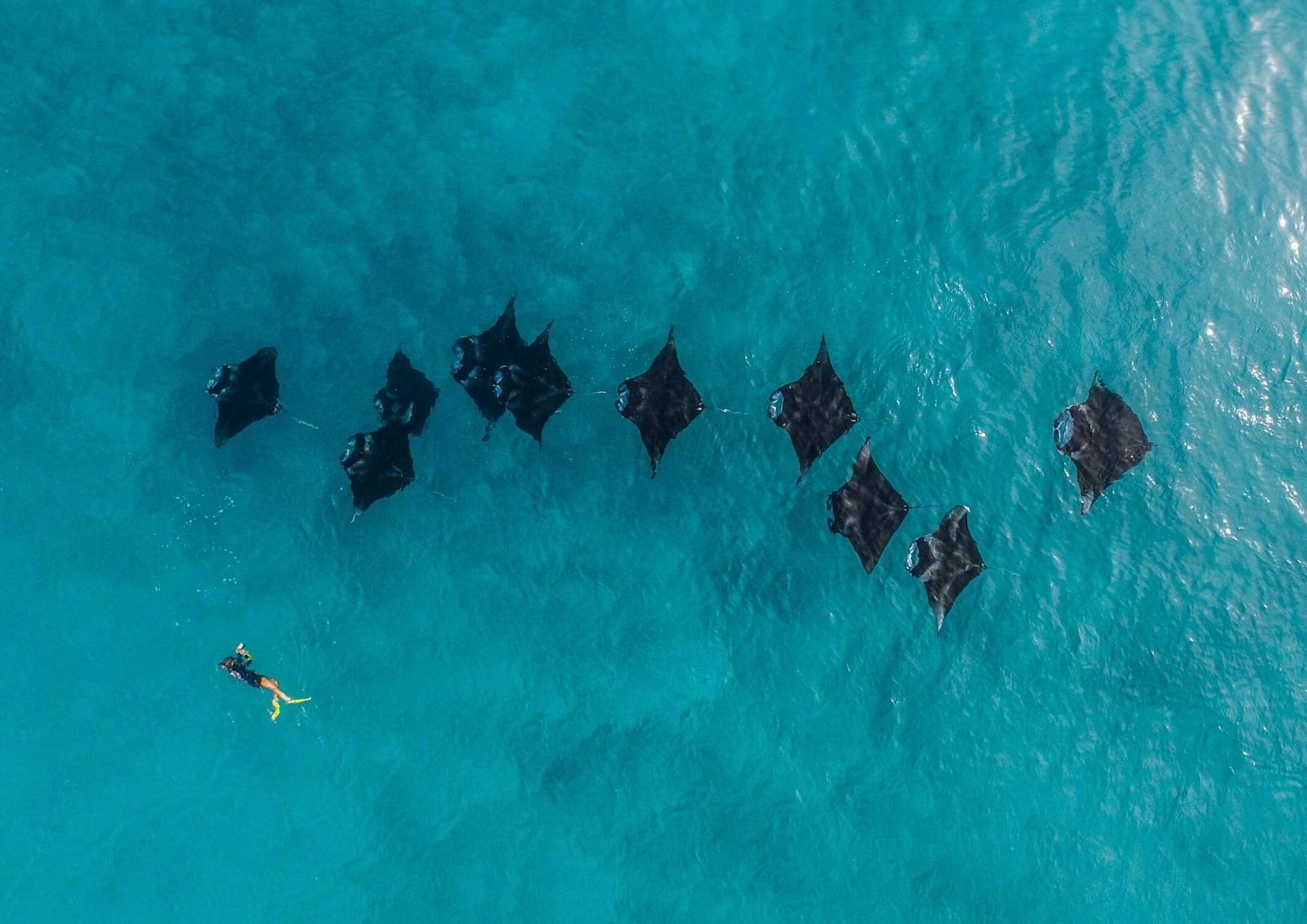Looking into an aquarium is like gazing up at the stars. They both elicit feelings of curiosity and wonder but also a fearful sense of awe. One can’t help but stare and lose themselves in the world on the other side of the glass. And, despite being of our planet — our blue planet — the creatures within appear as alien as those we ponder finding elsewhere in the cosmos.
Many of us may recall our first encounter with underwater life; perhaps it was a family fish tank or a trip to an aquarium. But few could say it changed the direction of their life as it did for Guy Stevens, founder and Chief Executive at The Manta Trust.
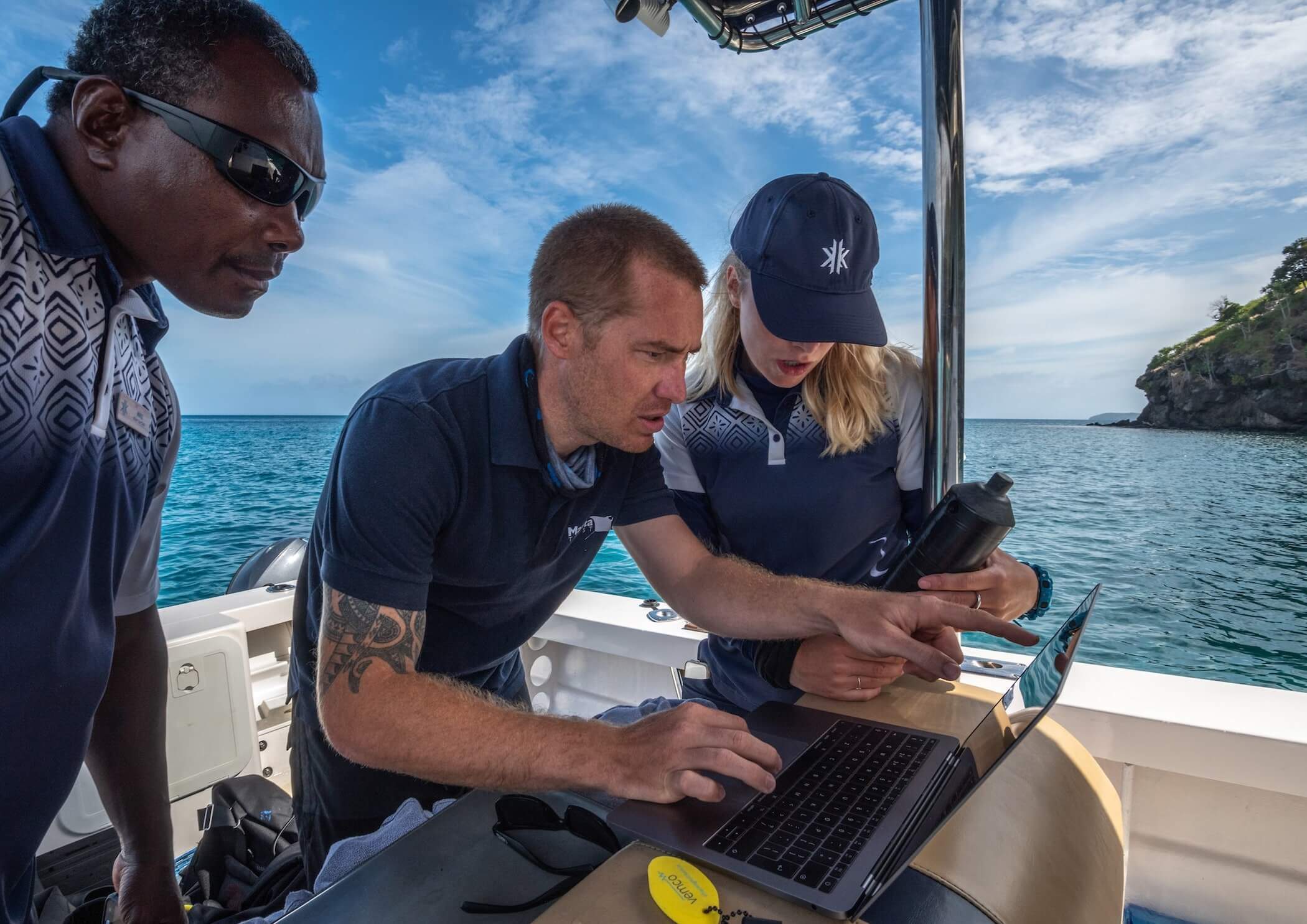
Stevens stole his first fish tank when he was 11. No, he didn’t hold up the local pet store with a slingshot. He took it from his older sister’s room after she adopted it from a friend and quickly grew bored with it. “It was literally a tiny tank, one foot by half a foot by half a foot, and I can still remember the six species it held,” Stevens explains. He’d always been fascinated by the natural world, but acquiring the tank and life within helped hone his focus. While he’s wary of calling it the beginning of an obsession, he quickly upgraded to bigger and bigger tanks, consuming all the information he could on different species and their habitats. Soon enough, household tanks, books, and documentaries weren’t enough. He wanted to observe and study these animals in the wild.
Staring them in the eye, you get the distinct feeling that they are as curious about you as you are about them.
Out of school, Stevens earned the diplomas needed to work in the ornamental fish trade for a short time. Ornamental fish are those kept as pets or on public displays for their beauty and decorative value. “You go from having three or four tanks at home to working in a shop with thousands of tanks, and you’re responsible for all of these other fish,” he says. “But, after a while, I learnt that's not what I wanted to be doing for the rest of my life, so I changed tact and went to university.” From here, Stevens earned an undergraduate degree in marine biology and worked in the Maldives as a marine biologist for the Four Seasons resorts. “I was basically a glorified snorkel guide slash divemaster. It was a pretty astonishing gig. The company paid to do the sort of thing I’d love to do on holiday. That’s when I first encountered manta rays and fell in love with them.”
Again, while his adventures in the Maldives brought Stevens closer, he still wasn’t doing the altruistic work he dreamed of. He began thinking beyond tourism for ways to focus on research, science, and conservation. Stevens shared these ideas with the very resorts he’d been working with and convinced them of the need for more responsible programmes. Striking his first partnerships, the Maldivian Manta Ray Project was born.
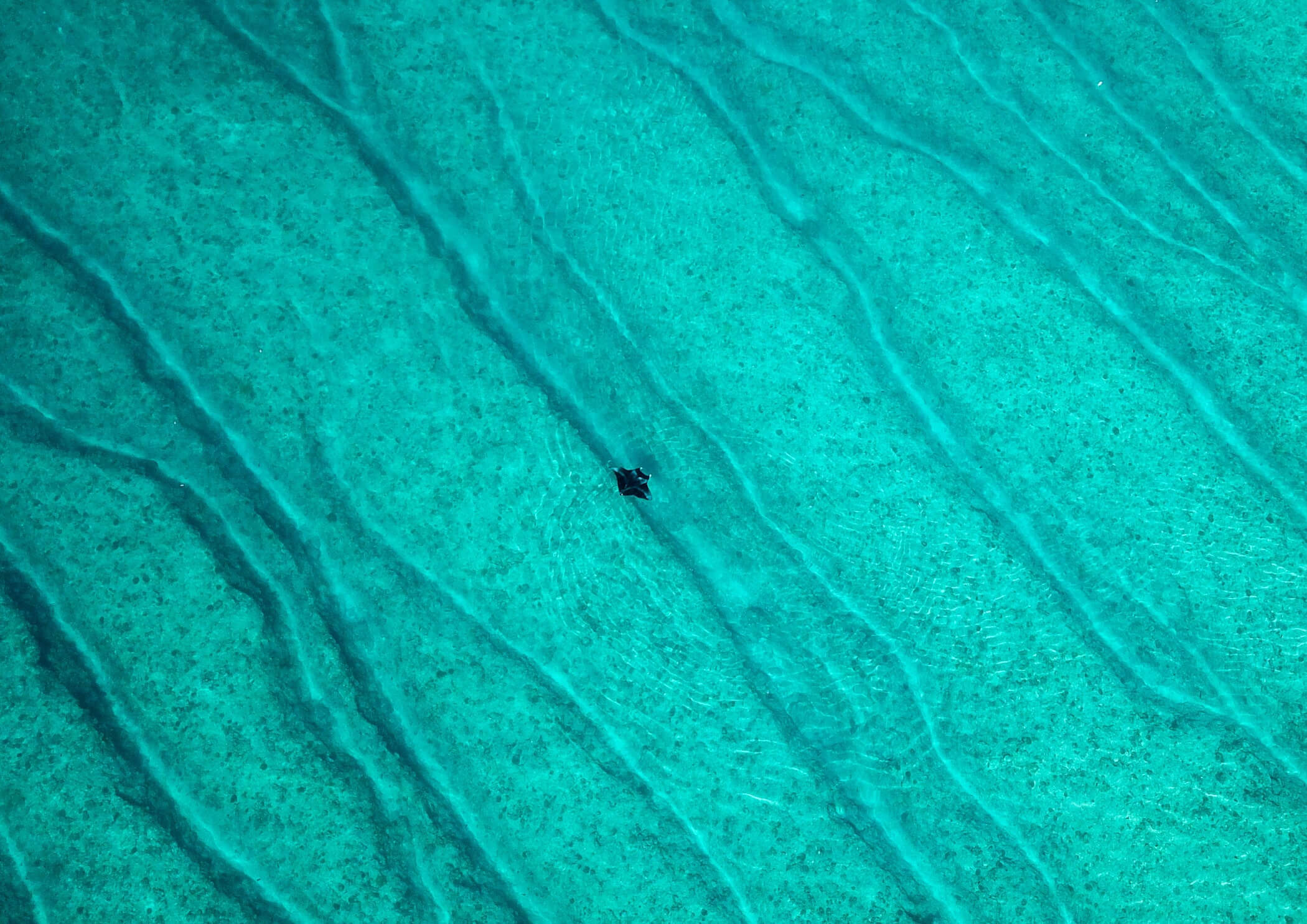
“As that expanded, I started collaborating with people in areas such as Mexico and Hawaii, where other manta folks were doing their thing. I took trips to Sri Lanka, where I saw these animals being fished, which then started to motivate me more in the conservation area. I realized there was a need to address an increasing threat to these animals globally and the best ways to do that. It was to build an organization that could form an umbrella to tie together all of these people in disparate locations with a common strategic vision and conservation-driven agenda. That’s really how the Manta Trust was formed in 2010.”
Manta rays are threatened by human activities such as fishing and over-tourism. They’re in need of conservation. But so are many others. Why focus primarily on them? “It's quite common within conservation to use a charismatic megafauna species to help connect people and drive your message. Because people tend to care more about species that look cuddly and fluffy, and you can use them to raise awareness of broader conservation issues,” says Stevens. Manta rays aren’t particularly cuddly or fluffy like other charismatic megafaunas such as tigers, pandas, and penguins. But their size, intelligence and individuality make them engaging to humans. Each manta has a unique pattern of spots that makes it easy to follow over its fifty-plus-year lifespan. When looking them in the eye, Stevens describes getting the distinct feeling that they are as curious about you as you are of them.
Everything pales in comparison to the bigger problem of the climate crisis
These traits, plus their tameness around humans, make manta rays an ideal poster child for The Manta Trust’s broader conservation efforts which focus on protecting underwater ecosystems, warming oceans and, biggest of them all, the global climate crisis. “Everything pales in comparison to the bigger problem of the climate crisis,” says Stevens. “And I think if we’re going to see a change, we need the same level of public engagement and activation pressure on governments that we’ve seen during the pandemic.”
The Manta Trust’s own approach is based on research, education, and collaboration. Research on which to base informed and effective decisions; education to inspire and engage people with the issues manta rays and the wider underwater world face; and collaboration to bring together individuals, local communities, businesses, and governments to work towards common goals.
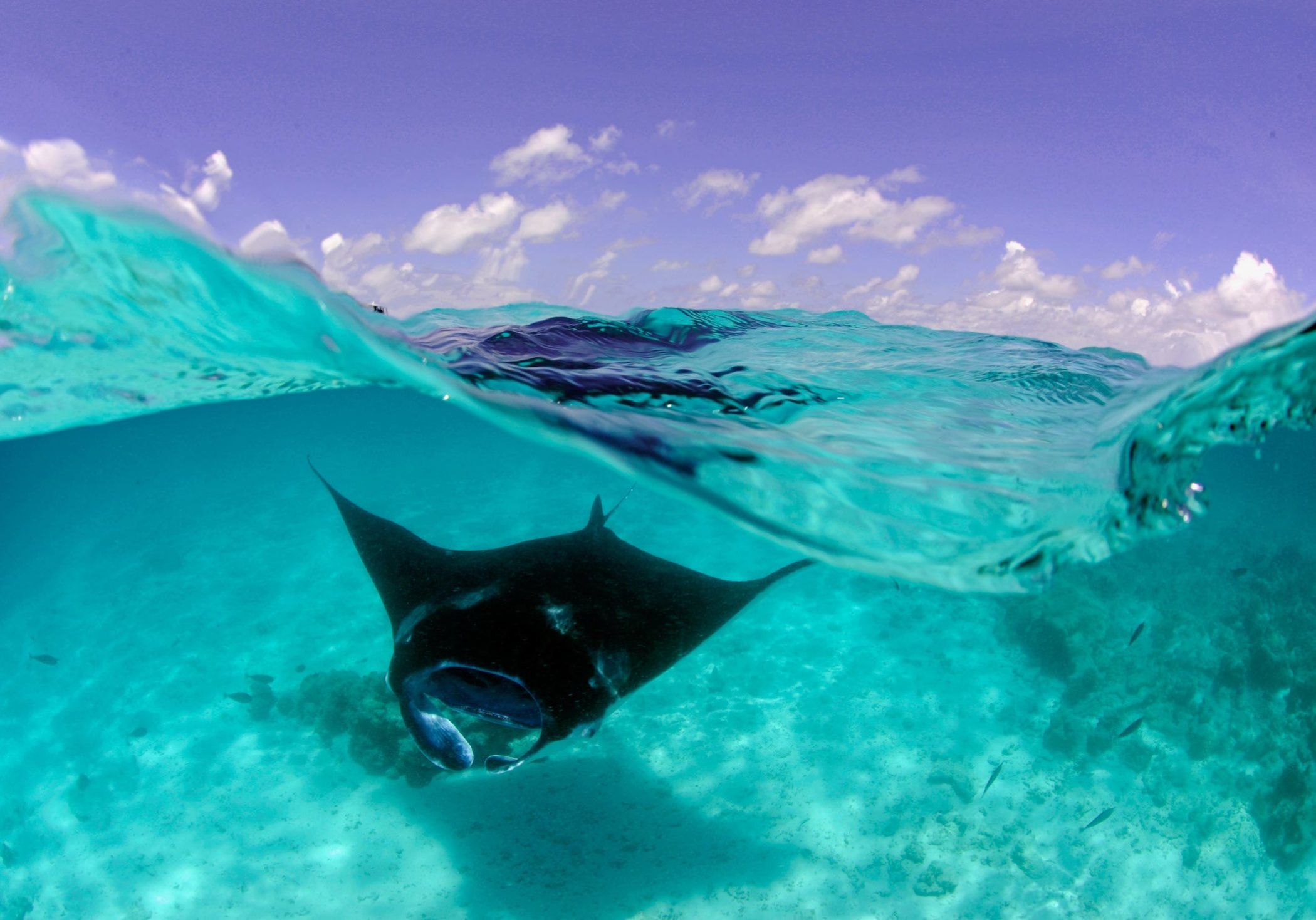
“Science is important for informing conversations and objectives, but science alone will not achieve our goals. You can have all the facts, but unless there’s political and public will to change things, you won’t be able to. That’s why we work with communities and governments to take things to the next level. We’re a tiny charity that will not achieve much without collaboration. Marine conservation is very competitive because there’s limited funding. There are plenty of egos scrambling for the same money, which tends to lead to competition instead of collaboration. Ultimately, that doesn’t help anyone achieve their goals.”
Marine conservation is very competitive because there’s limited funding
To fund operations, charities need money. Like it or not, this often means working with commercial partners. But this doesn’t have to mean trade-offs. Stevens explains a successful partnership is one that’s beneficial for both parties.
In some cases, companies hand over a cheque in the hope of greenwashing otherwise misaligned practices. “It’s a big challenge for every charity. Commercial partners are an important source of the money we need to operate. Still, we have to be cautious we don’t get into bed with someone who's going to degrade our integrity by using their association with us to get away with doing something that's harmful. We’ve turned down money many times in the past.
The Manta Trust’s flagship project is the Global Mobulid Conservation Programme. Supported financially by the Shark Conservation Fund, Save Our Seas Foundation and Save Our Species, the programme unites like-minded collaborators from around the world. Research, education, and collaboration form the foundation for three key objectives: change policy to regulate trade and fishing, ensure governments and local communities are capable of supporting protective measures and develop a five-year plan and funding strategy to continue the work. Programmes like this have opened up research opportunities and the development of educational workshops. Which, in turn, have helped inform governments and led to national manta ray protection in places with some of the world’s largest mobulid fisheries, like Peru and Thailand.
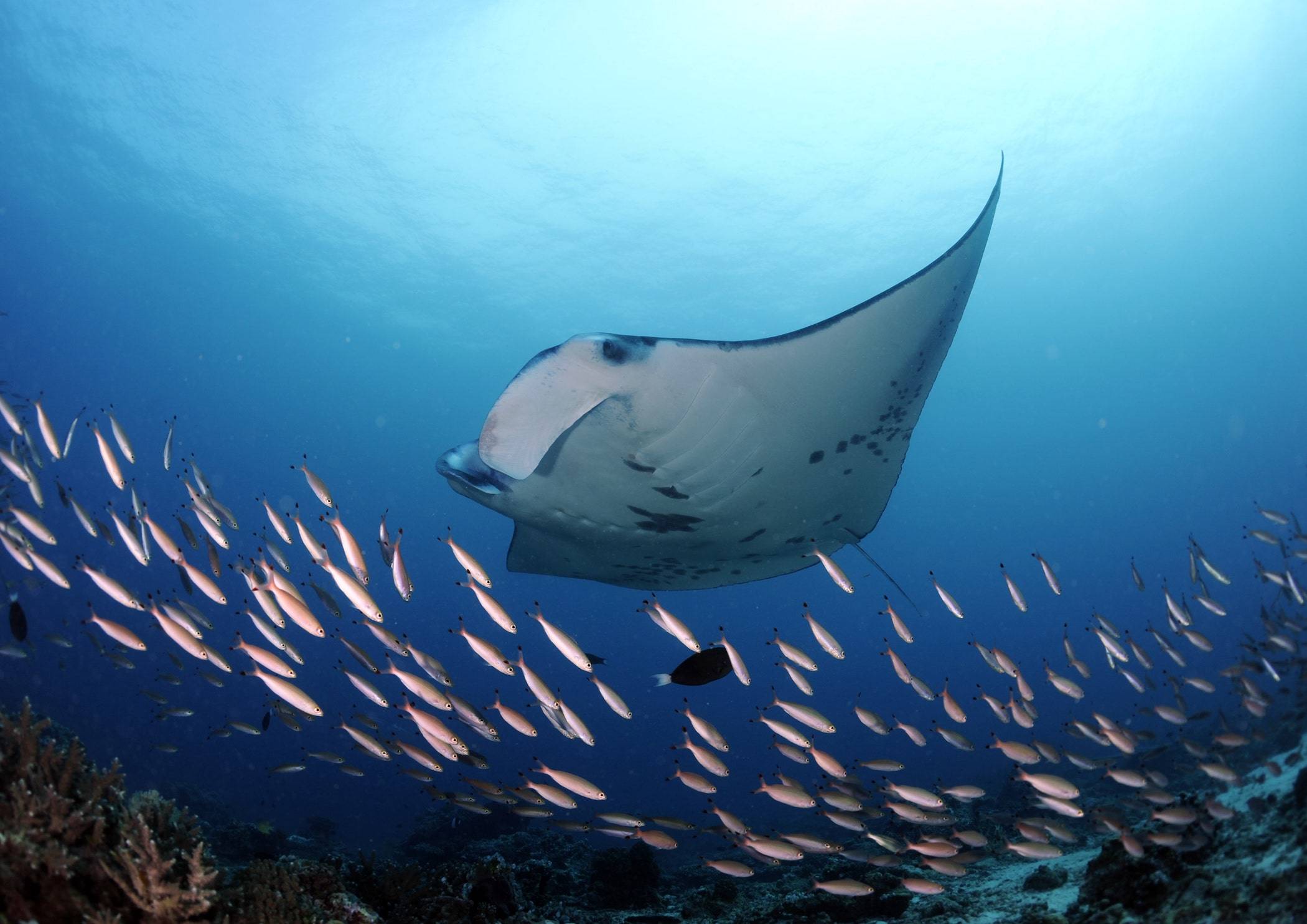
You can help support their efforts by donating here.
Over the last few years, and even more so, months, it’s become easy to look at the world and assume we’re doomed. Stevens is starkly aware that we’re living through a critical point and fears the climate crisis reaching a tipping point from which there’s no return. Nonetheless, he says he wouldn’t be doing this job if he wasn’t optimistic: “I’m a glass-half-full kind of guy.”
Having a long-term strategic plan to tie everything together is key
On a personal level, there are many ways people can support the Manta Trust’s objectives. If someone wants to interact with mantas or other marine life, Stevens recommends researching reputable operators rather than going with the first or cheapest you find. To make them easier to find, look out for operators recommended or supported by charities. The Manta Trust also has a How to Swim with Manta Rays guide available in 17 languages and offers people the opportunity to support them financially by adopting a manta.
The Manta Trust itself has learnt numerous lessons over its ten-year history that could be applied elsewhere. Stevens explains one of the biggest the organization learnt early on is that a problem is never entirely resolved. “If you let your guard down or don't have a plan in place to continue specific research or conservation objectives, a lot of work can be wasted, so having a long-term strategic plan to tie everything together is key.”

Ultimately, he believes it’s about bringing people together to focus not on individuals or organizations but on common goals. “I’m not the best at plenty of things, but one of the things I’m excellent at and most proud of is getting people to work together. I could list off things we’ve achieved as an organization, but none of that would be possible without all the people involved. If I die tomorrow, I know the Manta Trust will continue because it’s not about any individual. It’s an organization, and group legacy is more important than that of any figurehead.”
mantatrust.org is a goldmine of information, resources, and advice. You can support the Manta Trust immediately by visiting the support page which also includes information on how to adopt a manta. For regular updates, you can follow them on all the usual channels including Instagram, Twitter and Facebook.
Photo: Manta Trust
Last Updated on March 16, 2024 by Editorial Team
Aaron, from the UK, combines his experience as a branded content editor at Highsnobiety and academic background to offer a unique perspective. Passionate about the intersection of design, technology, and culture, Arron's work is marked by multidisciplinary insight.






